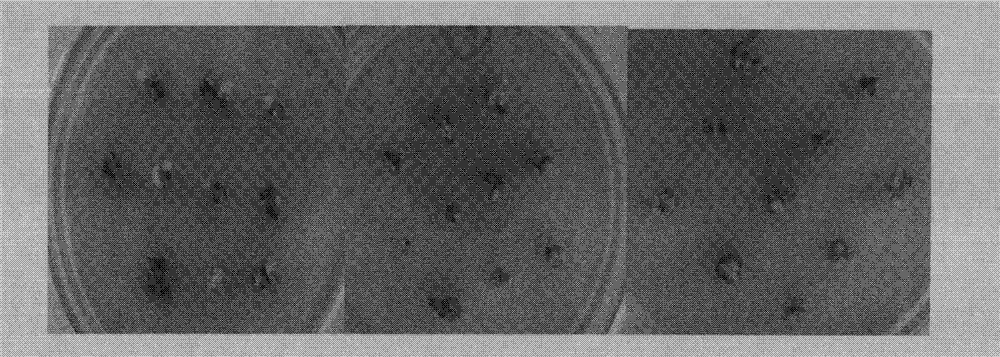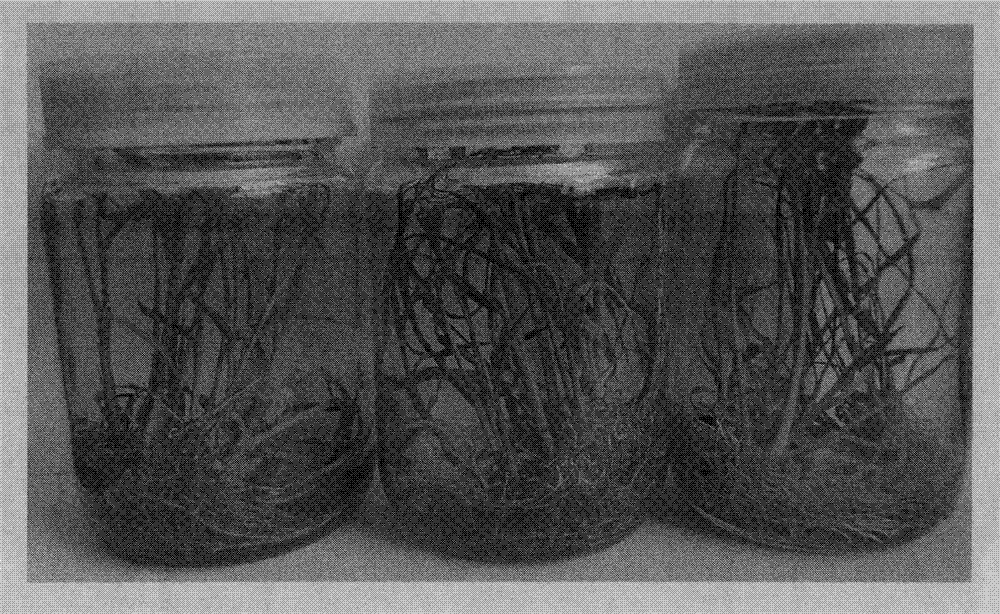Method for improving sugarcane genetic transformation efficiency by taking mannose as screening agent
A technology of genetic transformation efficiency and mannose, applied in the field of transgenic plants in the field of plant biotechnology, can solve the problems of low transformation efficiency, low transformation efficiency of genetic transformation system, unsuitable for genetic transformation of different genotypes of sugarcane, etc., and achieves strong regeneration ability. Effect
- Summary
- Abstract
- Description
- Claims
- Application Information
AI Technical Summary
Problems solved by technology
Method used
Image
Examples
Embodiment 1
[0041] 1. Cloning of 6-phosphate mannose isomerase gene manA
[0042] Design primers and carry out PCR cloning according to the 6-phosphate mannose isomerase gene manA (M15380) in GenBank.
[0043] 2. Construction of plant binary expression vector pPMI3301 containing manA.
[0044] The plant binary expression vector used in the present invention is pCAMBIA3301. The cloned 6-phosphate mannose isomerase gene manA replaces the htp gene on the plasmid pCAMBIA3301 with a binary expression vector named pPMI3301. The T-DNA region schematic diagram is as follows figure 1 Shown (LB: left border of T-DNA region; RB: right border of T-DNA region; Ubi: maize ubiquitin promoter; NOS: nopaline synthase termination sequence; manA: mannose-6-phosphate isomerase gene) .
[0045] 3. Obtaining genetically modified sugarcane
[0046] 1. Preparation of transforming receptors
[0047] Take sugarcane ROC22 stem apex 10cm long heart leaf segment as explants, cut into thin slices with a thickness...
Embodiment 2
[0068] 1. Preparation of transforming receptors
[0069]The young ears of sugarcane GT28 were used as explants, cut into sections with a length of about 1-2 mm, inoculated in callus induction medium, and cultured at 28°C in the dark. After 30 days, the callus was transferred to a new subculture medium, subcultured once every 25 days, subcultured twice, and pale yellow, granular sugarcane II embryogenic callus was obtained. The callus induction medium is based on MS medium, with 2mg / L 2,4-D, 10mg / L citric acid, 30g / L sucrose and 0.6% agar, pH 5.8. The callus subculture medium is based on MS medium, supplemented with 1.5mg / L 2,4-D, 10mg / L citric acid, 30g / L sucrose and 0.6% agar, pH 5.8. Before transformation, vigorously growing sugarcane type II embryogenic callus was transferred to fresh subculture medium for culture for 4 days, and the activated callus was used as transformation material. Use tweezers to crush the activated callus into small particles with a size of about 1...
Embodiment 3
[0085] 1. Preparation of transforming receptors
[0086] Take sugarcane GT21 1-2mm stem tips as explants, inoculate them in callus induction medium, and culture them in the dark at 28°C. After 25 days, the callus was transferred to a new subculture medium, subcultured once every 25 days, and subcultured 3 times to obtain pale yellow, granular sugarcane II embryogenic callus. The callus induction medium is based on MS medium, with 2mg / L 2,4-D, 30mg / L citric acid, 30g / L sucrose and 0.6% agar, pH 5.8. The callus subculture medium is based on MS medium, and added with 1 mg / L 2,4-D, 30 mg / L citric acid, 30 g / L sucrose and 0.6% agar, pH 5.8. Before transformation, vigorously growing sugarcane type II embryogenic callus was transferred to fresh subculture medium for 5 days, and the activated callus was used as transformation material. Use tweezers to crush the activated callus into small particles with a size of about 1-2 mm, and place it on an ultra-clean workbench and blow it for...
PUM
 Login to View More
Login to View More Abstract
Description
Claims
Application Information
 Login to View More
Login to View More - R&D
- Intellectual Property
- Life Sciences
- Materials
- Tech Scout
- Unparalleled Data Quality
- Higher Quality Content
- 60% Fewer Hallucinations
Browse by: Latest US Patents, China's latest patents, Technical Efficacy Thesaurus, Application Domain, Technology Topic, Popular Technical Reports.
© 2025 PatSnap. All rights reserved.Legal|Privacy policy|Modern Slavery Act Transparency Statement|Sitemap|About US| Contact US: help@patsnap.com



